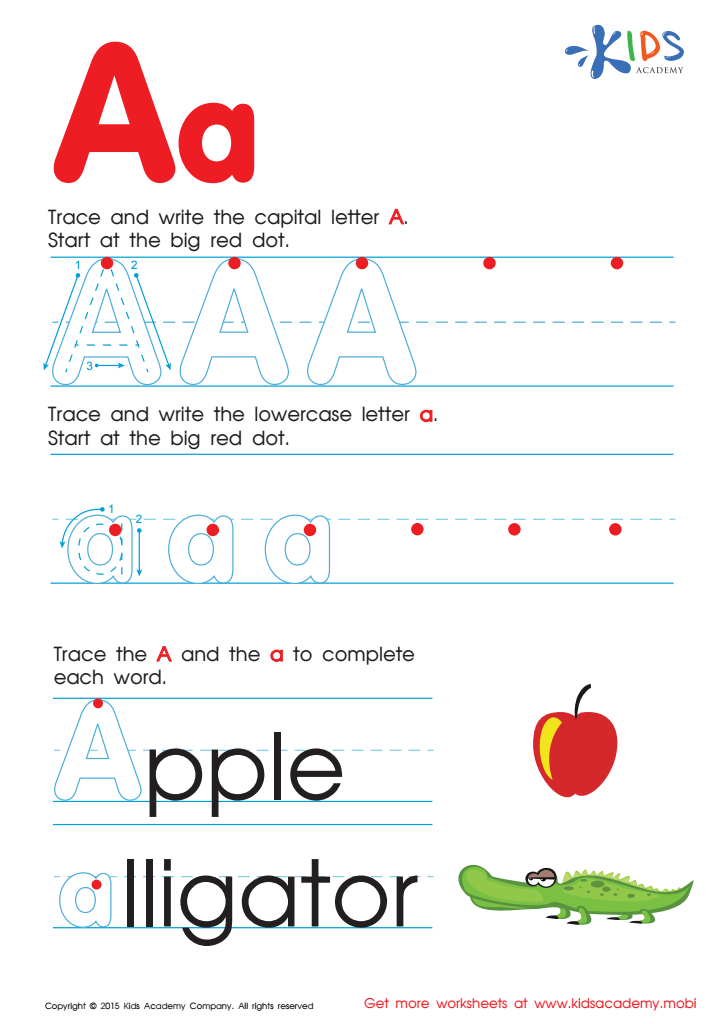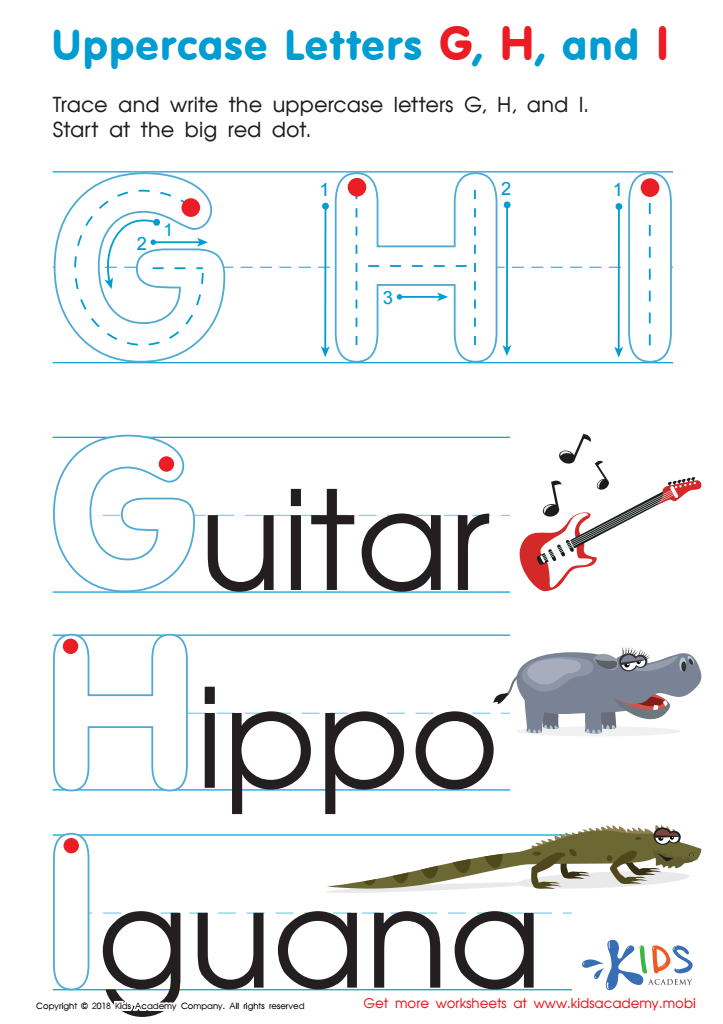Letter formation Tracing Letters Worksheets for Ages 4-5
4 filtered results
-
From - To
Explore our engaging Letter Formation Tracing Worksheets designed for children ages 4-5! These worksheets provide an interactive way for young learners to practice tracing letters, building essential handwriting skills. Each activity focuses on proper letter formation while making learning fun and effective. As children trace both uppercase and lowercase letters, they develop fine motor skills, hand-eye coordination, and confidence in their writing abilities. Perfect for home or classroom use, our worksheets support early literacy development while motivating kids to master the alphabet. Help your child become a confident writer with our captivating letter tracing resources today!


Letter A Tracing Page


Letter P Tracing Page


Uppercase Letters G, H, and I Worksheet


Letter G Tracing Page
Letter formation and tracing letters are critical skills for children aged 4-5, serving as foundational aspects of early literacy and writing development. Engaging in tracing activities helps children learn the shapes and patterns of letters, which aids in developing their fine motor skills. These skills are imperative for holding writing instruments, manipulating tools, and performing everyday tasks.
Parents and teachers should care about letter formation because it directly influences a child's ability to communicate effectively. When children can form letters correctly, they build confidence in their writing abilities, leading to enhanced creativity and expression. Moreover, proper letter formation facilitates smoother transitions to more complex writing tasks in future grades.
Additionally, tracing letters can be a fun and interactive activity, promoting language acquisition through phonemic awareness. It helps children connect letters with sounds, enriching their vocabulary and reading skills. Furthermore, when families and educators engage in tracing exercises together, it fosters a positive learning environment, encouraging collaboration and supporting the child's educational journey.
In summary, by prioritizing letter formation and tracing during ages 4-5, parents and teachers pave the way for their children’s academic success, improved motor skills, and a lifelong love for learning.

 Assign to My Students
Assign to My Students




















